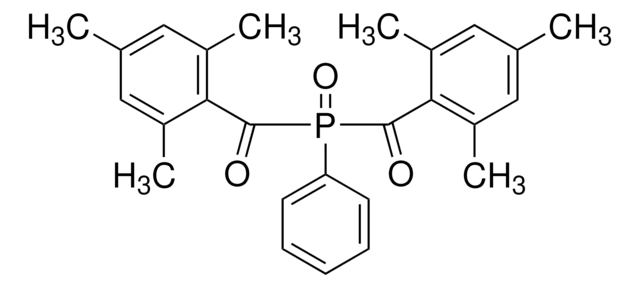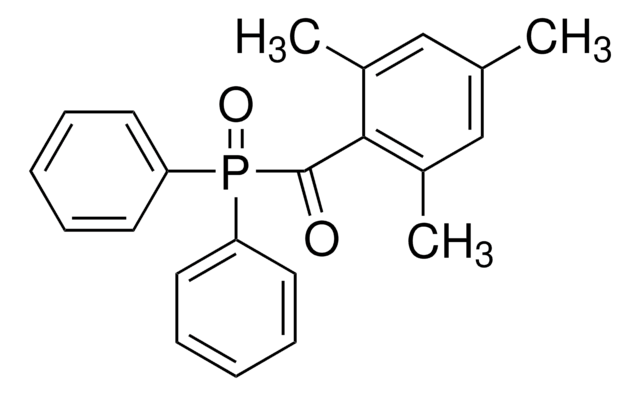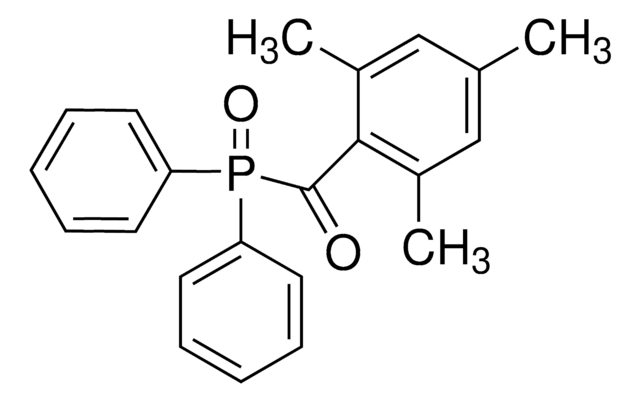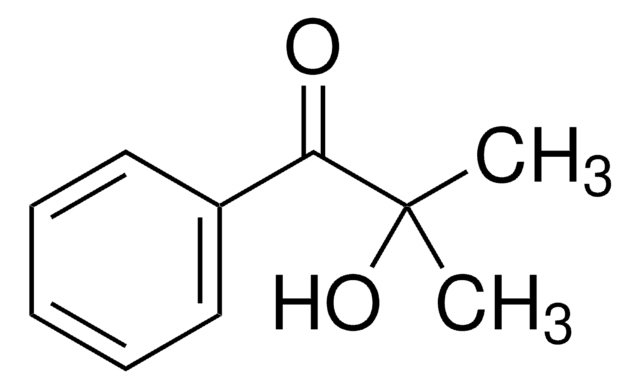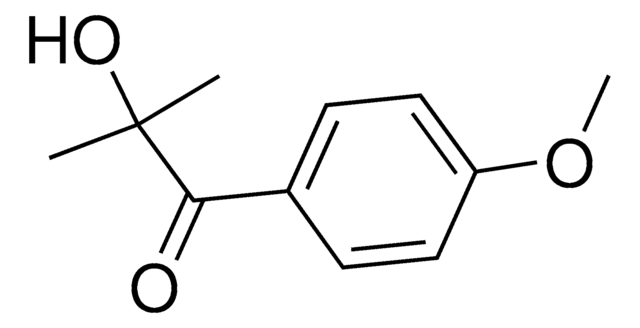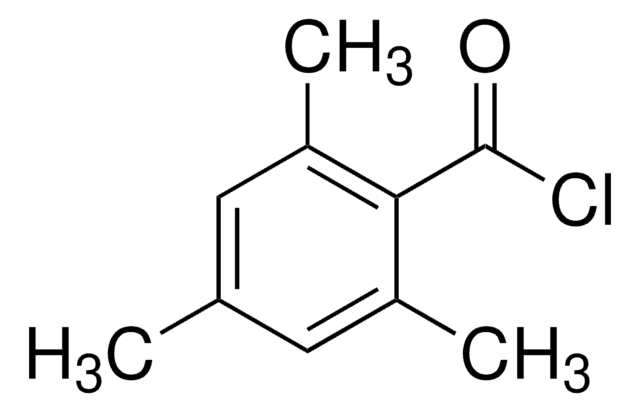900889
Lithium phenyl-2,4,6-trimethylbenzoylphosphinate
≥95%
Synonyme(s) :
LAP
About This Item
Produits recommandés
Niveau de qualité
Pureté
≥95%
Forme
crystalline powder
Couleur
white to off-white
Température de stockage
2-8°C
Chaîne SMILES
CC1=C(C(P(C2=CC=CC=C2)(O[Li])=O)=O)C(C)=CC(C)=C1
Vous recherchez des produits similaires ? Visite Guide de comparaison des produits
Application
Caractéristiques et avantages
- Superior water solubility
- Biocompatible
- Sensitiveto visible light
Code de la classe de stockage
11 - Combustible Solids
Classe de danger pour l'eau (WGK)
WGK 3
Point d'éclair (°F)
Not applicable
Point d'éclair (°C)
Not applicable
Faites votre choix parmi les versions les plus récentes :
Déjà en possession de ce produit ?
Retrouvez la documentation relative aux produits que vous avez récemment achetés dans la Bibliothèque de documents.
Les clients ont également consulté
Articles
The introduction of LAP and water-dispersible photoinitiator nanoparticles of TPO, enables the development of novel formulations for 3D bioprinting, tissue engineering applications, and device manufacturing.
Contenu apparenté
Tissue engineering fabricates tissues cultures from scaffolds, living cells, and biologically active molecules by simulating the microenvironment of the body to repair or replace damaged tissue.
L'ingénierie tissulaire permet de fabriquer des cultures de tissus à partir de supports, de cellules vivantes et de molécules biologiquement actives en simulant le microenvironnement de l'organisme pour réparer ou remplacer un tissu endommagé.
Notre équipe de scientifiques dispose d'une expérience dans tous les secteurs de la recherche, notamment en sciences de la vie, science des matériaux, synthèse chimique, chromatographie, analyse et dans de nombreux autres domaines..
Contacter notre Service technique

